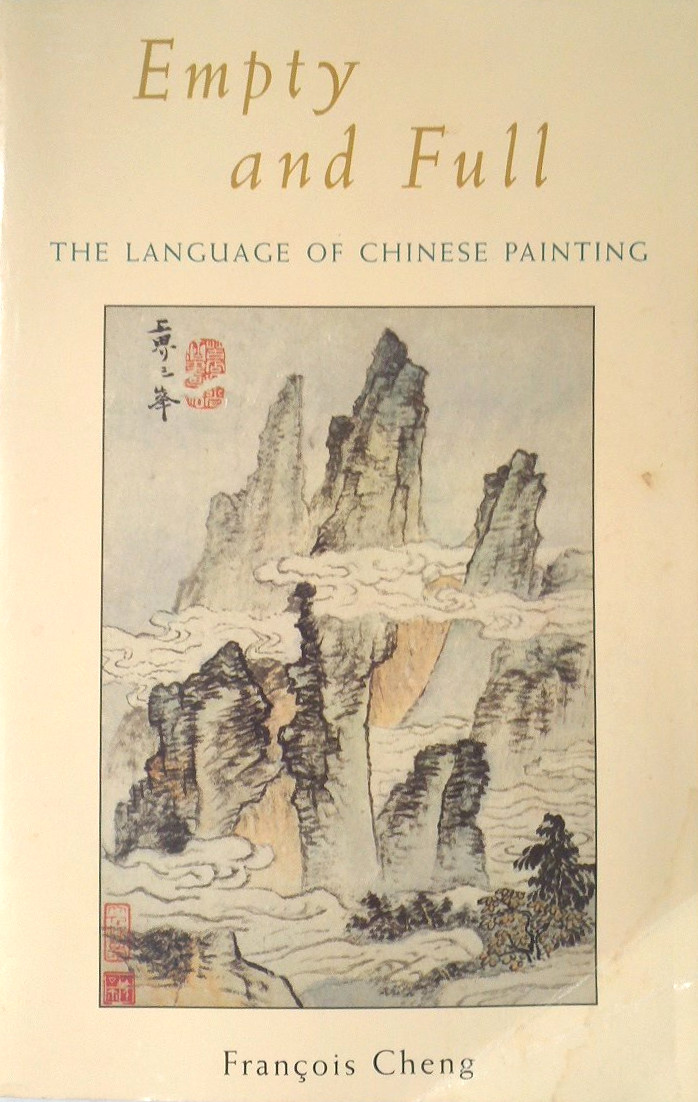François Cheng: Empty and Full: The Language of Chinese Painting (1979–) [ES, EN]
Filed under book | Tags: · art criticism, art history, china, painting, philosophy, semiotics

“Chinese painting might be called ‘philosophy in action,’ for it is one of the highest expressions of Chinese spirituality. Both a medium for contemplation leading to self-transcendence and a microcosm embodying universal principles and primal forces, it is a means for making manifest the Chinese worldview. At the heart of this worldview is the notion of emptiness, the dynamic principle of transformation. Only through emptiness can things attain their full measure and human beings approach the universe at the level of totality. Focusing on the principle of emptiness, François Cheng uses semiotic analysis and textual explication to reveal the key themes and structures of Chinese aesthetics in the practice of pictorial art. Among the many Chinese writers, poets, and artists whose writings are quoted, he gives special emphasis to a great Ch’ing dynasty theoretician and painter, Shih-t’ao. Twenty-seven reproductions of the words of Shih-t’ao and other masters illustrate the interpretive commentary.”
First published as Vide et plein: le langage pictural chinois, Seuil, Paris, 1979.
Translated by Michael H. Kohn
Publisher Shambhala, Boston and London, 1994
ISBN 0877739560, 9780877739562
ix+158 pages
via doublr
Vacío y plenitud (Spanish, trans. Amelia Hernandez and Juan Luis Delmont, 1985/93, 13 MB, via Amir Brito)
Empty and Full (English, trans. Michael H. Kohn, 1994, 8 MB)
Richard J. Powell: Black Art and Culture in the 20th Century (1997)
Filed under book | Tags: · abstract art, african american culture, art history, black people, contemporary art, cultural history, dance, diaspora, harlem renaissance, installation art, painting, photography, postmodernism, race, realism, sculpture, video

“The African diaspora—a direct result of the transatlantic slave trade and Western colonialism—has generated a wide array of artistic achievements in our century, from blues to reggae, from the paintings of Henry Ossawa Tanner to the video installations of Keith Piper. This study of 20th-century black art is the first to concentrate on the art works themselves, and on how these works, created during a major social upheaval and transformation, use black culture both as subject and as context.
From musings on the “the souls of black folk” in early twentieth-century painting, sculpture, and photography to questions of racial and cultural identities in performance, media, and computer-assisted arts in the 1990s, the book draws on the works of hundreds of artists including Jean-Michel Basquiat, Romare Bearden, Elizabeth Catlett, Lois Mailou Jones, Wifredo Lam, Jacob Lawrence, Spike Lee, Archibald Motley, Jr., Faith Ringgold, and Gerard Sekoto; biographies of more than 160 key artists provide a unique and valuable art historical resource.
Richard Powell discusses the philosophical and social forces that have shaped a black diasporal presence in 20th-century art. Placing its emphasis on black cultural themes rather than on black racial identity, this book is an important exploration of the visual representations of black culture throughout the twentieth century.”
Publisher Thames & Hudson, London, 1997
World of Art series
ISBN 0500202958, 9780500202951
256 pages
Reviews: Deborah Kempe (Art Documentation 1997), Steven Nelson (Art Journal 1998), Kymberly N. Pinder (Art Bulletin 1999), Elizabeth Harney (Nka 1999), Donna Seaman (Booklist).
Author (2nd ed.)
Publisher (2nd ed.)
WorldCat
PDF (59 MB, no OCR)
Comment (0)Venetia Porter: Word Into Art: Artists of the Modern Middle East (2006)
Filed under catalogue | Tags: · africa, art, art history, calligraphy, ceramics, contemporary art, hurufiyya, islam, language, literature, middle east, painting

This landmark catalogue is one of “the most comprehensive gatherings of Middle Eastern artists that has been undertaken in recent times.” Based on an exhibition mounted by the British Museum, it is “devoted to the recurring theme of calligraphy and how artists from the Middle East and North Africa use the traditional visual vocabulary of Arabic letters as a point of departure and an integral expressive element. The works, which were drawn mostly from the British Museum’s own collection of contemporary Islamic art, demonstrate how each artist celebrates the aesthetic powers and plasticity of the letters, while simultaneously pushing the boundaries, even sometimes subverting traditional canons. The artists manipulate letters, often transforming them beyond recognition, using ingenious and innovative methods, materials, styles, and daring compositions. Some use letters for purely aesthetic reasons, while others use them more instrumentally as writing, signs, or ciphers that allow the artists to grapple with issues of socio-political orientation and cultural and religious identity. For some artists this resonates with the sacred tradition of Islam and the Qur’an, while for others it is an undeniable part of their cultural heritage and a natural vehicle for expression.” (Sourced from the two reviews linked below.)
Foreword by Saeb Eigner
With contributions by Isabelle Caussé
Publisher British Museum Press, London, 2006
ISBN 0714111635, 9780714111636
144 pages
via IslamicManuscripts.info
Reviews: Islamic Monthly (2006), Maryam Ekhtiar (CAA Reviews 2007).
PDF (124 MB)
Comment (0)
